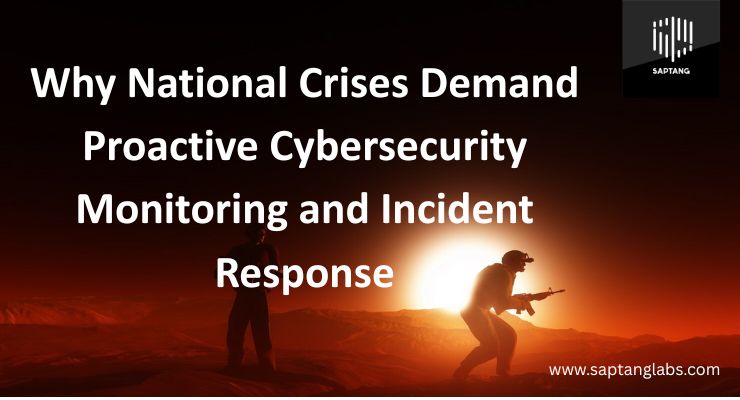National crises often bring more than just physical disruption—they also open the door to a wave of digital threats. While the world focuses on events unfolding on the ground, cyber attackers are quietly taking advantage of the chaos online. From fake donation sites to phishing scams and misinformation campaigns, the digital risks are real—and growing.
This post is about what happens in the digital world during these moments, and why being prepared online matters just as much as being prepared offline.
What Happens Online When a Country Is in Crisis?
You might be surprised at how quickly cyber threats appear during a national emergency. Here’s what often happens:
- Scammers create fake donation sites to steal money from people who just want to help.
- Hackers try to break into official websites—government portals, emergency services, even news sites.
- Fake news spreads fast on social media, making people more scared or confused.
- Phishing emails pop up, using the crisis as bait to get people to click risky links.
These threats don’t wait. They show up within hours—and sometimes minutes—after a real-world event.
Why Do Hackers Do This?
During a crisis, everyone’s focused on the emergency. IT teams might be short-staffed. Leaders are handling bigger issues. People are rushing to share news and help each other.
And that’s exactly when attackers strike.
They know people are less careful. They know systems might be under pressure. They know fear makes people act fast—and click without thinking.
So they take advantage of it.
Who’s Most at Risk?
Some organizations are more likely to be targeted during a crisis, including:
- Government websites and emergency service systems
- News outlets and public information portals
- Critical infrastructure, like electricity, transport, and hospitals
- Businesses, especially those tied to security or public services
- Everyday people—especially those trying to help or stay informed
When trust is most important, a cyberattack can create even more confusion, slow down emergency response, or cause harm that wasn’t there before.
What Can Be Done to Prevent This?
There’s no one-size-fits-all fix—but there are smart, practical things every organization can do.
1. Watch What’s Happening in Real Time
It’s not enough to check logs once a week. You need to be watching your digital systems constantly—especially during high-alert times.
2. Keep an Eye on the Dark Web
Yes, it sounds shady—but a lot of planning for cyberattacks happens there. If you can spot threats being discussed or planned, you can prepare in advance.
3. Have a Response Plan
If something goes wrong, does everyone on your team know what to do? From the tech team to leadership to customer support—everyone needs a simple, clear plan.
4. Protect Public-Facing Systems
If your website is the one people rely on during a crisis, it should be able to stay online, even when traffic spikes or attackers try to bring it down.
Building Stronger Cyber Readiness for Everyone
No matter the size of your organization—whether you’re in government, critical infrastructure, media, or private business—the need for proactive cyber readiness is real, especially during a crisis.
Here are a few practical ways to strengthen your digital defenses:
- Monitor continuously. Don’t rely on once-a-day checks. Crises evolve fast—your monitoring should, too.
- Know where threats start. Many planned attacks show up first in hidden corners of the internet, not in your inbox or firewall.
- Watch your public-facing platforms. Websites, apps, and social media accounts are often the first things attackers target during public emergencies.
- Keep your team aligned. Everyone—tech teams, communications, leadership—should know what to do if something goes wrong. Practice helps.
- Focus on clarity, not noise. Instead of drowning in alerts, invest in clear, actionable insights that help you respond, not react.
Final Thoughts
In moments of national crisis, cybersecurity becomes about more than just data. It becomes about stability, safety, and trust—for the people who depend on you.
We may not control what happens in the world. But we can control how prepared we are for the digital ripple effects that follow.
Being ready doesn’t mean being perfect. It means thinking ahead, staying informed, and building systems that hold strong—even when everything else is being tested.
If your team is working on crisis readiness or cyber response planning, this is the time to prioritize it.
You may found this also helpful:
The Future of Cyber Wars: What We Can Expect in the Next 10 Years


